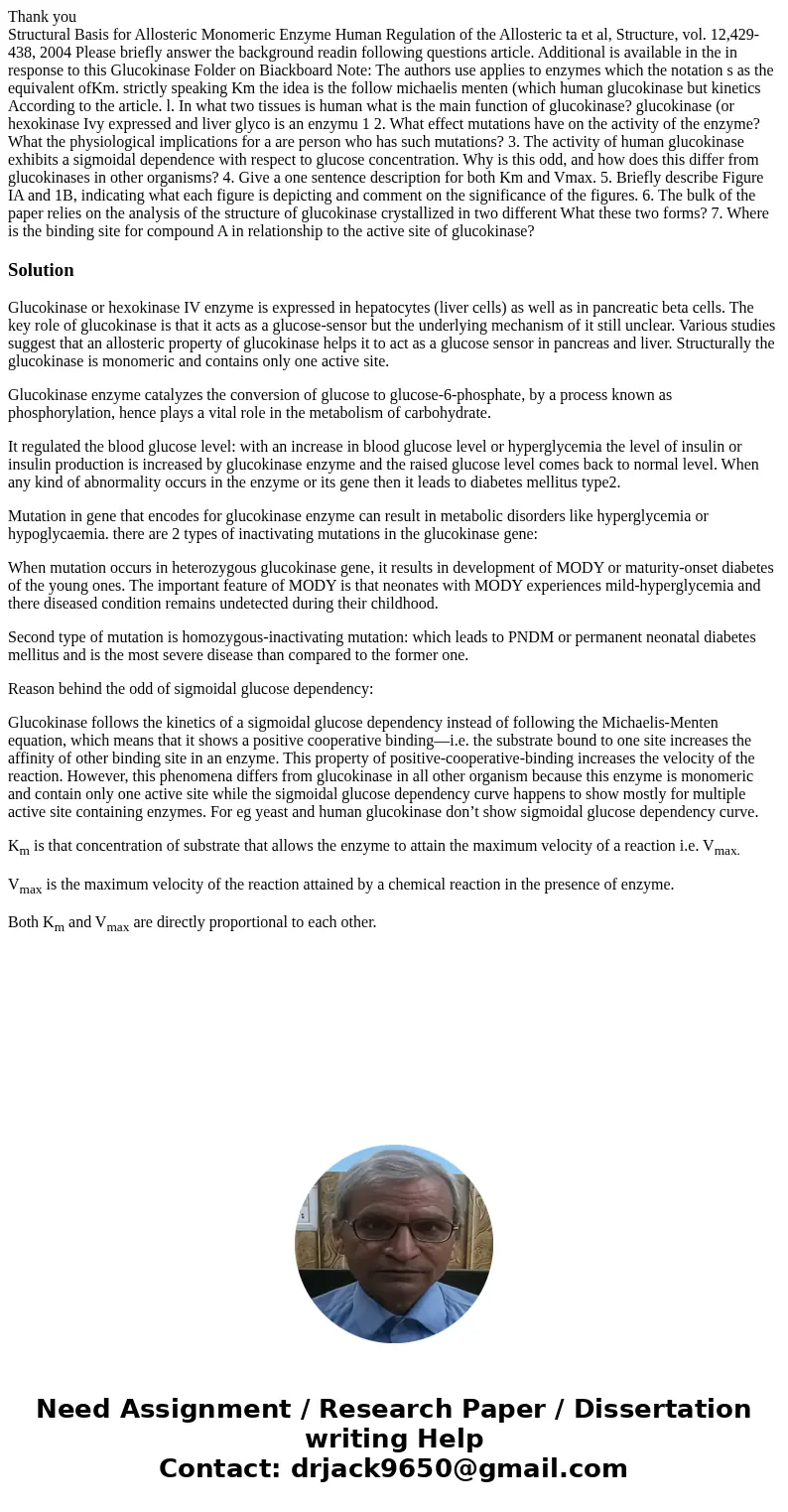Thank you Structural Basis for Allosteric Monomeric Enzyme H
Solution
Glucokinase or hexokinase IV enzyme is expressed in hepatocytes (liver cells) as well as in pancreatic beta cells. The key role of glucokinase is that it acts as a glucose-sensor but the underlying mechanism of it still unclear. Various studies suggest that an allosteric property of glucokinase helps it to act as a glucose sensor in pancreas and liver. Structurally the glucokinase is monomeric and contains only one active site.
Glucokinase enzyme catalyzes the conversion of glucose to glucose-6-phosphate, by a process known as phosphorylation, hence plays a vital role in the metabolism of carbohydrate.
It regulated the blood glucose level: with an increase in blood glucose level or hyperglycemia the level of insulin or insulin production is increased by glucokinase enzyme and the raised glucose level comes back to normal level. When any kind of abnormality occurs in the enzyme or its gene then it leads to diabetes mellitus type2.
Mutation in gene that encodes for glucokinase enzyme can result in metabolic disorders like hyperglycemia or hypoglycaemia. there are 2 types of inactivating mutations in the glucokinase gene:
When mutation occurs in heterozygous glucokinase gene, it results in development of MODY or maturity-onset diabetes of the young ones. The important feature of MODY is that neonates with MODY experiences mild-hyperglycemia and there diseased condition remains undetected during their childhood.
Second type of mutation is homozygous-inactivating mutation: which leads to PNDM or permanent neonatal diabetes mellitus and is the most severe disease than compared to the former one.
Reason behind the odd of sigmoidal glucose dependency:
Glucokinase follows the kinetics of a sigmoidal glucose dependency instead of following the Michaelis-Menten equation, which means that it shows a positive cooperative binding—i.e. the substrate bound to one site increases the affinity of other binding site in an enzyme. This property of positive-cooperative-binding increases the velocity of the reaction. However, this phenomena differs from glucokinase in all other organism because this enzyme is monomeric and contain only one active site while the sigmoidal glucose dependency curve happens to show mostly for multiple active site containing enzymes. For eg yeast and human glucokinase don’t show sigmoidal glucose dependency curve.
Km is that concentration of substrate that allows the enzyme to attain the maximum velocity of a reaction i.e. Vmax.
Vmax is the maximum velocity of the reaction attained by a chemical reaction in the presence of enzyme.
Both Km and Vmax are directly proportional to each other.

 Homework Sourse
Homework Sourse